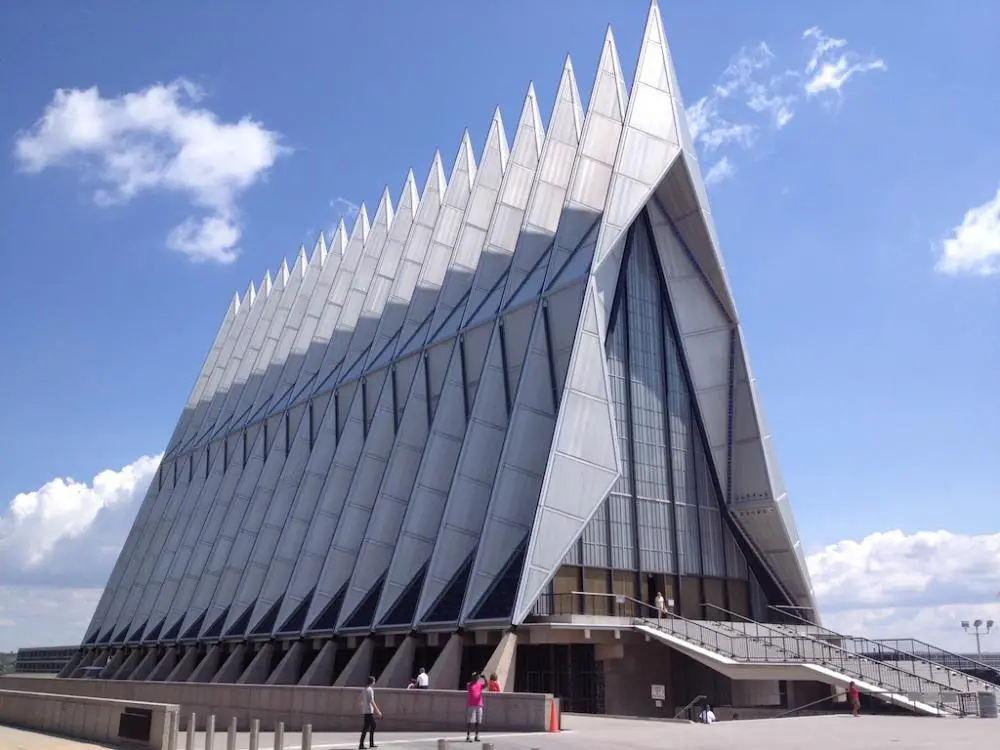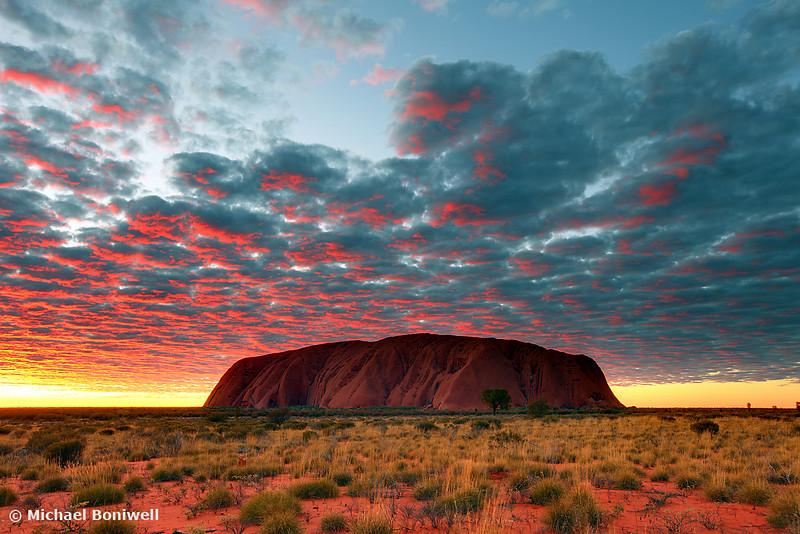The Spanish have a saying for things like medicines, that truly work: “It’s like the hand of a saint,” referring to osseous relics collected by Christians and thought to possess miraculous powers. Those bones, supposedly from the remains of martyred Christian saints, are all over the world and are meant to be sacred. But Christianity is not alone among the world’s religions in possessing sacred objects, placed in holy places, where the faithful dutifully surrender tribute and prayer to these memorabilia. Let’s take a look at some of the most fascinating sacred places of world religions.
10. The Kaaba

Built by the biblical Abraham and his son Ishmael, the Kaaba is the holiest of shrines for Muslims and the unifying focal point of Islam. The faithful everywhere and anywhere turn to face the Kaaba when they pray. The Kaaba stands at the center of the Al-Masjid al-Haram mosque in Mecca at 43 feet high (13.1 meters). Although this cuboid building has withstood the test of time, as it was built way before the prophet Muhammad, it has undergone several versions after damage by natural, age and man-made catastrophes. Originally built as a house of monotheistic worship, it was later taken over by pagan Arabs to house their numerous tribal gods. Muslims that undertake the pilgrimage to Mecca, one of the five pillars of Islam, surround the Kaaba and walk around it counter-clockwise, a ritual known as “tawaf.”
9. Wat Phra Kaew
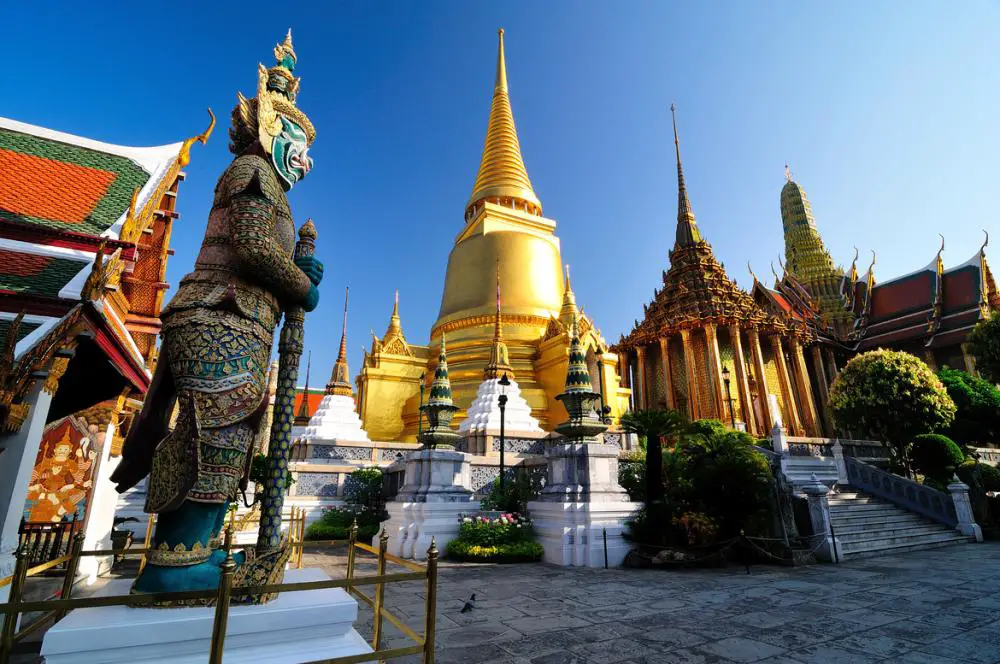
This Buddhist temple located in Bangkok is the most sacred house of worship for Thai Buddhists and a powerful political symbol for the country. It houses the sumptuous and mysterious Emerald Buddha, carved in 43 BCE in India; from there the statue made its way to Sri Lanka, Burma, Cambodia until it found its final home in Thailand. Made from a single piece of jade, no one, except the Thai King, is allowed to touch the statue. The King changes the cloak around the statue’s back and shoulders three times a year to mark the seasonal changes and to bring the nation good luck.
8. Ganga Talao
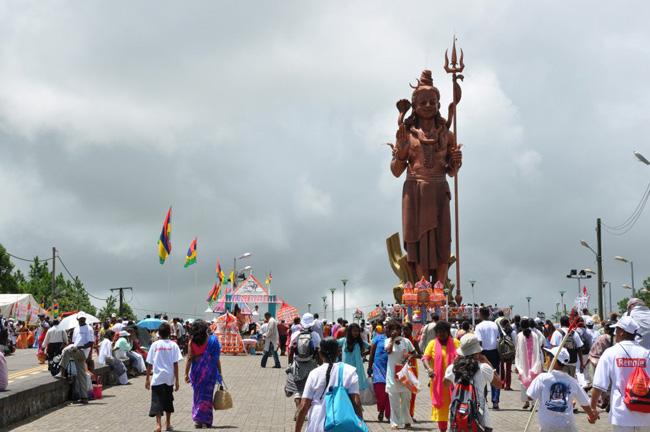
Lying 1800 feet above sea level, the Ganga Talao is a sacred crater lake on the island of Mauritius. It is the holiest place for the island’s Hindus and home to a temple dedicated to Lord Shiva, the Supreme God within Hinduism. At the entrance to Ganga Talao stands a 108-foot tall statue of Shiva holding a trident. Hindu pilgrims flock barefoot and on foot to Gangao Talao every year on the Maha Shivaratri, the Great Night of Lord Shiva, when the God married Parvati, and celebrate by leaving offerings, fasting and an all-night prayer session called “jagran.”
7. Mount Kailash

It’s rare to find a place (or anything, for that matter) that is sacred to four religions, but such is the case of Mount Kailash. This impressive snow-capped peak in the Kailas Range of the Tibetan Transhimalaya is a monument to ecumenism and spiritual harmony. Hinduism, Jainism, Buddhism and the little known Bon religions all claim, Mount Kailish as one of their most sacred sites. For Hindus it’s the place where the Lord Shiva resides sitting in perpetual meditation together with his wife, Parvati. For Buddhists it is the home of the Buddha Demchok, master of the supreme bliss. For Jainists it is the place where the first Jain and founder of Jainism, Rishabhadeva, attained nirvana. For the followers of Bon it is the seat of all spiritual power. As with most religious sites, there is a yearly pilgrimage to the mountain by the faithful of these four religions.
6. Devil’s Tower
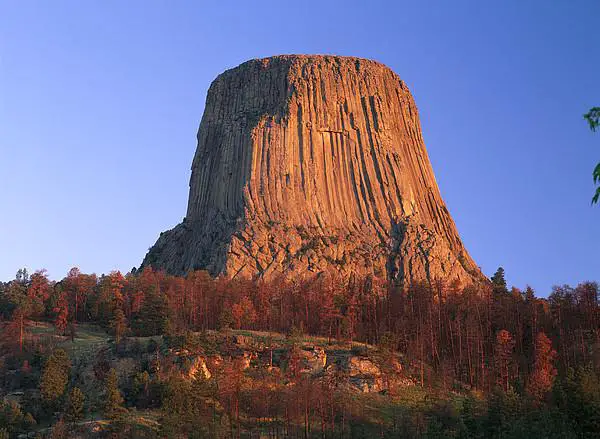
The 1,267-feet tall igneous intrusion in the Bear Lodge Mountains of Wyoming, is a sacred site to at least 25 different Native American tribes; from Cheyenne to Sioux, from Lakota to Crow and the Shoshone people. They all venerate this odd geological formation that started sprouting from the ground in the Triassic period, some 225 to 195 million years ago. The tribes however tell a different story regarding its formation in order to fit it into their cosmology. The Kiowa and Lakota tribes tell of some girls who were out playing when they encountered a bear. The girls ran to the top of a pile of rocks and prayed to the Great Spirit to save them who, in answer to their prayers, made the rocks rise to the heavens out of reach of the bears. The ridges on the side of Devils Tower are bear claw marks made by the bears as they tried to climb to reach the girls. The girls, in turn, were turned in the constellation Pleiades. The site was also used by Steven Spielberg in his now classic “Close Encounter of the Third Kind” as a plot element and in the movie’s climactic scene.
5. Pu’uhonua
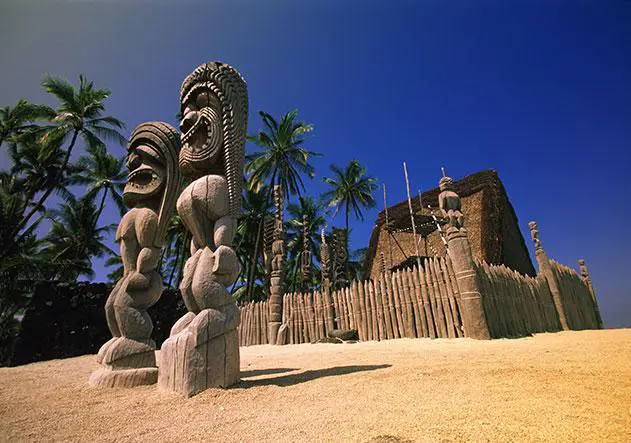
Nothing can be more sacred than a place of refuge, a sanctuary of sorts, than guards you from life and death. The Hawaiians had such a place. Hawaiian society was governed by the Kapu, or the sacred laws, that if broken could only lead to one punishment: Death. It didn’t matter how small or big the offence, the punishment was the same for all. But there was one way to avoid punishment; if the accused could make his way to Pu’uhonua, no harm could come to him. So sacred was this place that not even death, at least by the hand of man, could enter this sanctuary. The site is divided by a great stone wall that separates the Royal grounds from the refuge, while the area is dotted with carved wooden images or ki’i demarcating the place where the bones of the chiefs lie buried and emanate their power. Pu’uhonua is now a National Historical Park.
4. Harmandir Sahib
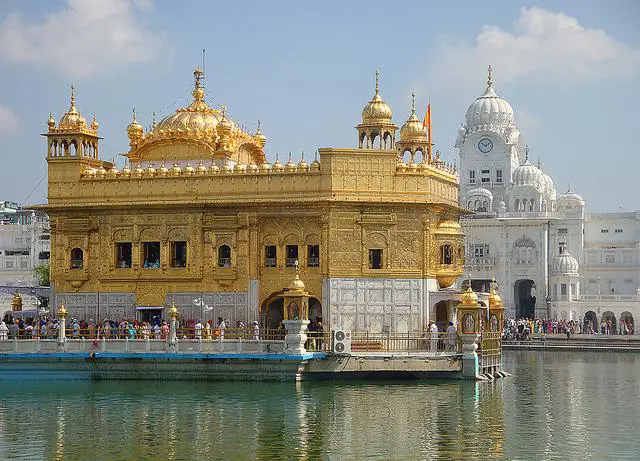
One of the distinguishing features of some of the Eastern religions, such as Buddhism and Sikhism, is their emphasis on peaceful coexistence and the lack of a deity. Buddhism is well known in the West, but, unfortunately, Sikhism remains largely a mystery. The Sikh’s holiest shrine is the golden temple of Harmandir Sahib in the city of Amritsar, in the Indian Punjab. Built in the 16th century by the fourth Sikh guru, Guru Ramdaas Sahib Ji, as a central place of worship for Sikhs, the temple received its most precious content when Guru Arjun completed the Adi Granth, the holy scripture of Sikhism, in 1604 and placed it in the Gurudwara. The fourth Guru, built the Golden Temple, as it is also known, on a tank he had excavated and filled with water. This pool was called Amritsar, or “Pool of the Nectar of Immortality.” Its four entrances symbolize the Sikh openness to all people and religions, who are welcome to visit the temple and pray. The temple is also one of the largest free kitchens in the world serving a mind-boggling 100,000 meals per day. Now that’s what I call religion.
3. Shrine of Baha’u’llah
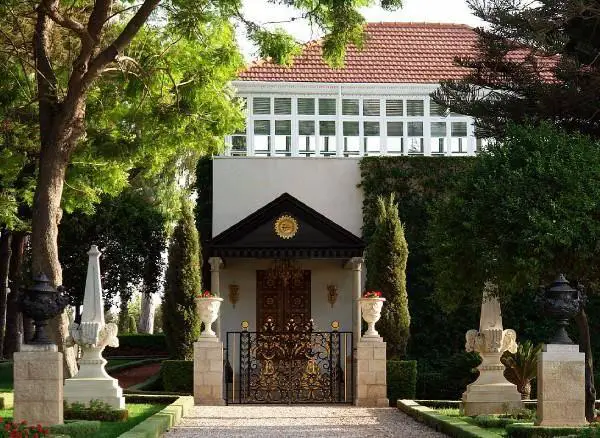
The Bahá’í faith is perhaps the world’s youngest religion having been born in 1844 in Iran from the Shi’ite branch of Islam. In that short period of time, at least compared to other religions, Bahá’í has managed to become the third most widespread religion in the world after Christianity. Their holiest shrine, Shrine of Bahá’u’lláh, is located in Acre, Israel, strangely enough, and it represents their Qiblih, or direction of prayer, much like the Kaaba represents Muslim’s direction. The shrine contains the remains of Bahá’u’lláh, the messenger of God and founder of the Bahá’í Faith.
2. Haiyun Taoist Temple
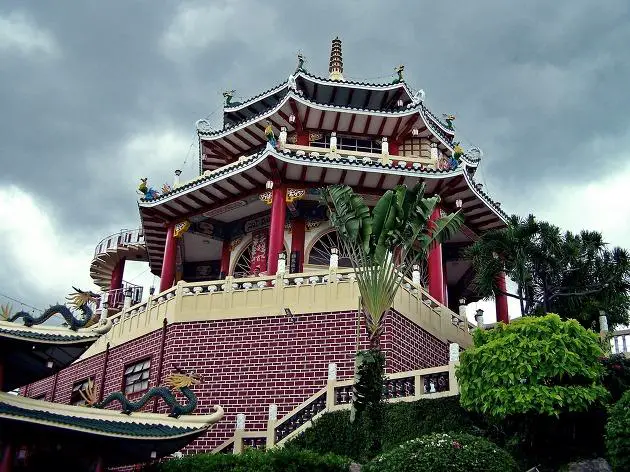
The Haiyun Taoist Temple, the oldest Holy Land of Taoism in Northeast China, is situated on Songfeng Mountain in Helongjiang Province. It dates back to the Jin Dynasty (1115-1234) when Xiao Baozhen, the founder of the Taiyi Tao of Taoism, was invited by Jin Emperor Shiying to Northeast China to spread Taoism. Baozhen established himself on Songfeng Mountain and lived a comfortable life being spoiled by the emperor who ordered Haiyun Temple to be built for him. The buildings of the Haiyun Taoist Temple stand strong after so many centuries with its solemn and magnificent halls. Taoists flock to the temple to worship and hold ceremonial rites in search of prosperity, a peaceful life and good weather every year on some important festivals. The Temple houses many precious cultural relics, including the famous tablet inscriptions of the Jin period and the statues of 60 constellation Gods worshiped by Taoists.
1. Jerusalem
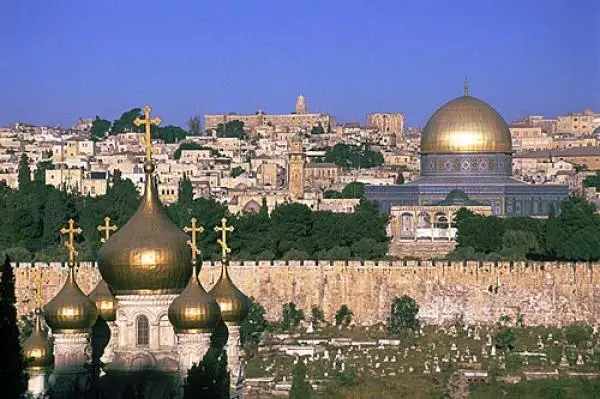
One of the oldest cities in the world and holiest of places to the three major monotheistic Abrahamic religions: Judaism, Islam and Christianity. Jerusalem straddles both life and death in its earthly setting. It lies between the Mediterranean Sea, the cradle of civilization and giver of life, and the Dead Sea, where few creatures can live. Perpetually in strife, from Babylonians and Assyrians, to Romans, Arabs, Crusaders and Ottomans; the city still trembles at the violence perpetrated by both Israelis and Palestinians. Jerusalem well deserves the title of “The Eternal City,” more than Rome or any other. God’s secrets are hidden somewhere in the Kotel, the al-Aqsa Mosque, the Temple Mount and the Church of the Holy Sepulchre.

